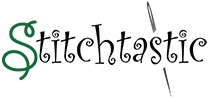Cross stitching is a craft which involves two hands - one to hold the piece you are working on and the other to direct the tapestry needle into the correct hole in the Aida. A good guide to which hand actually holds the needle is to use your strongest hand for this purpose, that is the hand you write with. There are lots of left handed people but as they are well aware, most directions for any form of craft are aimed mainly at people that are right handed.
Initially, a great aid to left handed people is the provision of left handed gadgets and you will be amazed at the number of these items that are now available. A must for any left handed cross stitcher is a pair of left handed scissors and these are now on the market in a variety of sizes.
Which ever hand the needle is held in is not really important - the main thing is you need to be able to guide your needle through the correct hole in the square of the Aida to make your cross stitches. One of the most essential requirements of a good cross stitcher (left or right handed) is to ensure that the diagonal top stitch of your work always runs in the same direction. Therefore, if you commence your cross stitch in the top right hand corner of the square, your first part of the cross will be entered in the opposite left hand corner of the square. The needle should then be guided on the reverse of the Aida to the top of the left hand corner of the same square completing the cross by guiding the needle into the right hand corner.
Left handed cross stitchers will start their piece of cross stitching at the centre of the pattern, as do right handed stitchers, working outwards and as long as they remember to always keep the top half of the cross stitch running in the same direction diagonally, they should work in which ever way they find most comfortable. There do not appear to be any hard and fast rules as to which direction you should work in, other than from the centre outwards, and as long as you are enjoying your cross stitching and are pleased with the appearance of the piece, you should continue to work in which ever method you feel happiest.
Many experienced cross stitch enthusiasts use a hoop to hold the piece of material they are currently working on and a left handed person would hold the hoop with their right hand whilst guiding the tapestry needle with their left hand. If using a hoop, you must remember to remove it from the work before you put it away when you have finished your cross stitching session, as if left in place, you will find it can cause additional creases.
As you will be aware, cross stitching is a hobby with no timescale - it is entirely your choice how many hours a day you wish to spend sewing and some people prefer to use both hands to guide their needle. When the right hand feels tired, they change and use their left hand. When you have familiarised yourself with the art of cross stitching that suits you the best, you will establish your own particular method of working, preferably one that you are comfortable with.
New cross stitchers, whether left or right handed, will naturally take much longer to complete even a small piece of work than experienced cross stitchers. However, as long as you are delighted with your finished article and have enjoyed making it, left or right handed, you will see that you have created a beautiful thing which will last for some considerable time if it is looked after carefully.
